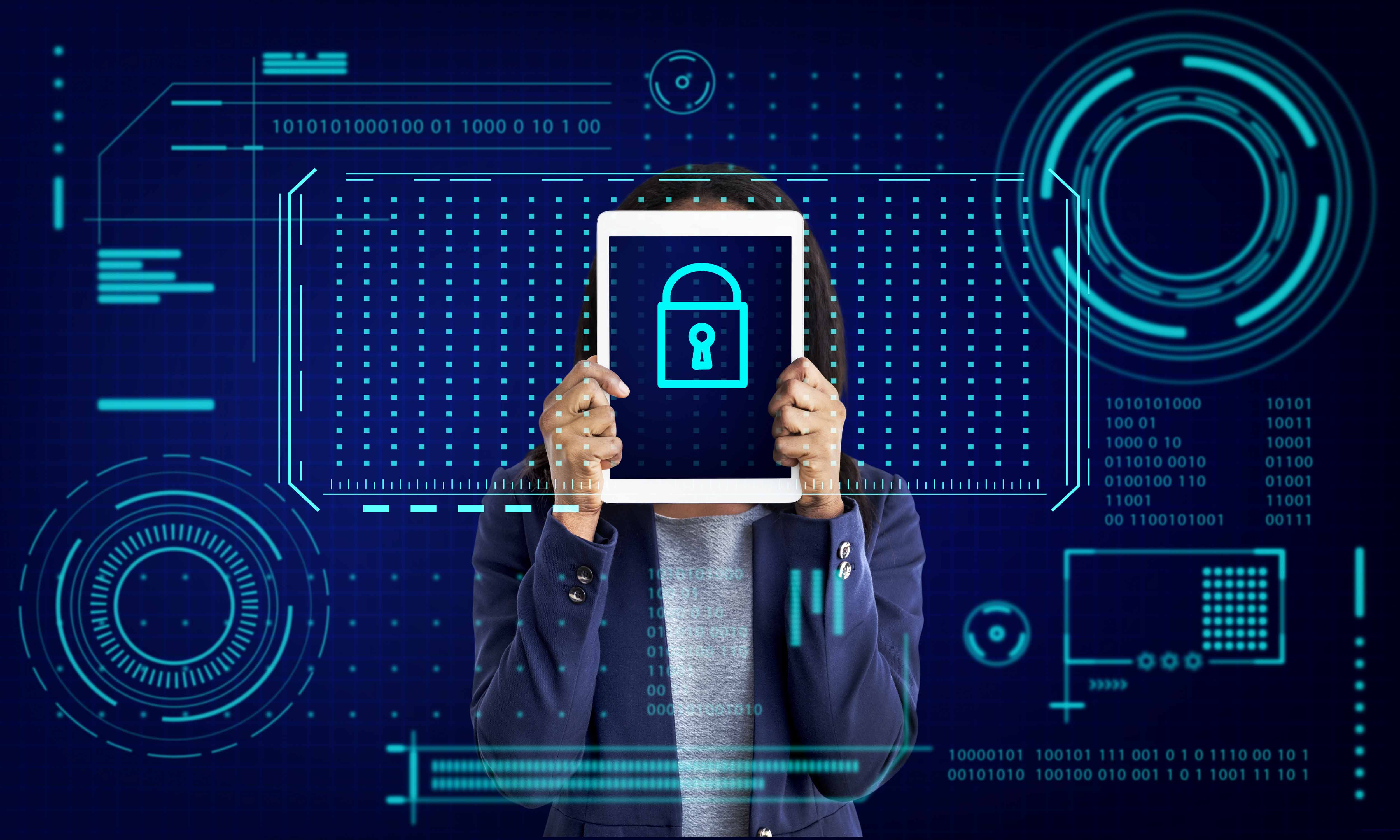
by Rebeca | May 24, 2023 | cloud, cybersecurity, soffid
Protecting your digital identity and ensuring business security is crucial in today’s digital landscape. Identity and access management (IAM) plays a vital role in safeguarding digital experiences and mitigating potential consequences. Here are five essential IAM security practices to protect your company’s digital identity:
Implement robust password policies to prevent security risks associated with weak or reused passwords. Consequences may include data loss, IP theft, and compliance violations.
Use multifactor authentication (MFA) to defend against identity theft attacks. Attackers with password access can infiltrate systems, engage in fraud, and spread malware, leading to reputational damage, customer loss, and financial losses.
Manage privileges properly to prevent employees from gaining unnecessary access or abusing their privileges, which can result in data leaks, internal sabotage, and reputational harm.
Regularly monitor and audit systems to detect malicious activity and suspicious behaviour promptly. Failure to do so can lead to security breaches, exposing confidential data, incurring regulatory penalties, and losing customers.
Stay up-to-date with security patches and updates to avoid known vulnerabilities. Neglecting updates can leave your company susceptible to malware attacks, system compromises, operational disruptions, revenue loss, and damage to your brand’s reputation.
Protecting your company’s digital identity is essential for security and business continuity. By implementing strong IAM security practices, you can mitigate potential consequences such as data loss, reputational damage, and financial losses. Don’t overlook the importance of safeguarding your digital identity in today’s digital landscape.
Soffid is a converged IAM platform that will help you implement everything necessary to keep your company safe.
Shall we talk?
(1) readwrite.com

by Rebeca | Apr 26, 2023 | cloud, Customer, cybersecurity, open source, soffid
It is important to understand the latest tactics used by adversaries to compromise cloud infrastructure. Cloud exploitation is on the rise, and it is essential to be aware of the threats that businesses are facing.
Why are adversaries accelerating cloud exploitation?
The rise in cloud adoption has made it an attractive target for cybercriminals. Cloud infrastructures are often seen as less secure due to the complexity of managing and securing these environments. Additionally, many businesses have adopted a “cloud first” strategy, which means that they are prioritizing cloud services over traditional IT infrastructures. This shift has made cloud infrastructure a more valuable target for attackers.
Tactics used to compromise cloud infrastructure:
Misconfigured Services: Adversaries often exploit misconfigured cloud services to gain unauthorized access. This can include misconfigured storage buckets, firewalls, and other cloud services that may expose sensitive data.
Exploiting Weak Passwords: Weak passwords are an easy target for attackers. If credentials are not secured, attackers can use automated tools to perform brute force attacks to gain access.
Social Engineering Attacks: Attackers may use social engineering tactics such as phishing emails or spear-phishing attacks to gain access to credentials or sensitive information.
Supply Chain Attacks: Third-party providers and vendors may have access to a company’s cloud infrastructure. Attackers may target these third-party providers to gain access to their target’s cloud infrastructure.
Advanced Persistent Threats (APTs): APTs are complex and persistent attacks that are designed to gain access to sensitive data over an extended period. APTs can involve a combination of techniques and tools to infiltrate cloud infrastructure.
Adversaries are constantly evolving their tactics to compromise cloud infrastructure. Misconfigured services, weak passwords, social engineering attacks, supply chain attacks, and APTs are just a few of the tactics used by attackers. To protect against these threats, it is essential to implement security best practices, such as multi-factor authentication, security monitoring, and regular security assessments
Soffid provides its clients with all the necessary tools to deal with these risks.
Shall we talk?
Sources
- CroudStrike Global Report
- Redsky Alliance

by Rebeca | Jul 19, 2022 | cybersecurity, News, Resources
Evidence suggests there is a global cybersecurity skills shortage affecting businesses and governments alike. Which means that organizations are struggling to fill their cybersecurity vacancies.
With the volume and severity of breaches in recent years, it’s unsurprising that businesses are now recognising the risk. As a result they begin to respond accordingly.
In fact, global security spending is predicted to reach $1.75 trillion by 2025. To many, this might seem like a positive step – but we need to consider where that money is going.
A very common tactic adopted by organizations is to throw money at the problem. But it’s proven to be ineffective and can end up making the problem worse. By deploying hundreds of disparate security products to tackle individual weaknesses, the business can become overwhelmed. At the same time, teams will miss the bigger picture.
The importance of workforce
Security awareness training usually takes a fixed approach where one cyber threat is tackled at a time. Workers are not taught to defend the company from threats. Instead, they train themselves with multiple-choice questions that they can easily forget.
It bears no relevance to the role these workers will play in the midst of a crisis. And treats them like vulnerabilities – not defensive assets.
Each member of the workforce has value to add. So instead of these outdated and ineffective methods, organisations need to focus on three simple factors. With this in mind, they can develop the cyber capabilities of their entire workforce. Those factors are: exercising, evidencing and equipping.
In other words:
- continually benchmark the knowledge, skills, and judgement of the workforce;
- demonstrate risk levels across all business functions by using data gathered from simulations;
- and use regular cyber exercises to plug any skill gaps. These criteria are critical.
New strategies needed to close the cybersecurity skills gap
Cyber security challenges will only become more complex, which means we need to be proactive. It takes time to educate and train highly skilled professionals, and time to gain practical working experience.
If we are going to realistically meet these mounting challenges, we must find ways to bridge the cyber skills gap.
By casting our nets wide and leaving no stone unturned, we can build a workforce that is capable of meeting the cyber security challenges of tomorrow.
See how Soffid can help you stay ahead of the curve in a rapidly evolving digital world. Share your requirements and a representative will follow up to discuss how Soffid can help secure your organization.
Sources:
(1) computerweekly.com
(2) cybereason.comPicture:
Foto de concepto creado por Waewkidja – www.freepik.es

by Rebeca | Jun 8, 2022 | cybersecurity, Resources
Cybersecurity threats continue to grow. Even with people returning to the office, the rapid demand for us all to be present online has also led to a dangerous surge in cyberattacks, data breaches and fraudulent activity targeting individuals and businesses.
According to McAfee Enterprise, during the pandemic, 81% of global organizations experienced increased cybersecurity threats and 79% experienced downtime as a result of a cybersecurity incident. Preparation is key.
How to avoid cybersecurity threats
Training
One of the most common ways cyber criminals get access to your data is through your employees. They’ll send fraudulent emails impersonating someone in your organisation and will either ask for personal details or for access to certain files. Links often seem legitimate to an untrained eye and it’s easy to fall into the trap. This is why employee awareness is vital.
One of the most efficient ways to protect against cyber attacks and all types of data breaches is to train your employees on cyber attack prevention and inform them of current cyber attacks.
Keep your systems up to date
Often cyber attacks happen because your systems or software aren’t fully up to date, leaving weaknesses. Hackers exploit these weaknesses so cybercriminals exploit these weaknesses to gain access to your network. Once they are in – it’s often too late to take preventative action.
Control access to your system
It’s essential to control who has access to your computers. Having a perimeter security system installed is a very good way to stop cybercrime as much as break ins.
Access Management
Having managed admin rights and blocking your staff installing or even accessing certain data on your network is beneficial to your security. That is why we recommend you to know the importance of IoT Identity And Access Management (IAM)
Passwords
Having different passwords setup for every application you use is a real benefit to your security, and changing them often will maintain a high level of protection against external and internal threats.
Summary
Preventing a cyberattack is crucial for your business’s survival. It takes a lot of time, money, and effort to recover from a cyberattack, and you’ll need to work with the relevant authorities to resolve the issue and set up new systems to thwart future threats.
The business will suffer reputational damage if it loses customer data or fails to alert them early about a breach. Companies that rely on your business for their operations will also be hurt in the process.
Picture: Foto de seguridad creado por rawpixel.com – www.freepik.es

by Rebeca | Apr 27, 2022 | cybersecurity, Resources, soffid
Security risk assessments are an important tool in your organization’s arsenal against cyber threats. Because they highlight areas of risk in your digital ecosystem. As well as informing and prioritizing mitigation strategies, and ensuring that hard-earned resources are allocated where they are needed most. Assessments can also help you assess your third parties to mitigate the very real possibility of them introducing unwanted risk to your organization.
Evaluating security risk is important for all companies. Most businesses carry sensitive information, ranging from employee data to customer details, this can be vital information to keep private. As a result evaluation prevents data loss. In addition to protecting the confidentiality of all parties involved and the assets of the company.
To successfully perform a vendor or internal security risk assessment, you need to combine automation with multiple tools. Which are based on data that provides a continuous and accurate picture of cybersecurity risk both internally and throughout your third-party ecosystem.
What is Security Risk Assessment?
The applications used in a company are the most exposed to security problems. Therefore, they must be studied and evaluated. Especially all those applications integrated in technologies and processes. By learning about these systems, companies can assess the risk that accompanies them. And use it to your advantage when looking for security information.
When the company maintains a high level of security, it is protected. Especially confidential information belonging to employees, companies, customers and partners. With these precautions, the risks of cyberattacks and data loss are avoided.
Despite the best efforts of your security teams, risk mitigation and remediation are often incomplete. Typically, this happens because you have an incomplete view of safety performance. Many organizations don’t have a clear idea of what systems, devices, and users are on their networks. This is why they do not have a way to efficiently identify, measure and monitor their risk profiles.
The digital transformation exacerbates the problem. As your organization’s digital footprint grows, identify vulnerable systems and assets. Identifying on-premises, cloud, and cross-business-unit facilities, geographies, remote locations, and third parties is not easy.
Security Risk Assessment Tools
Security risk assessment tools can range from physical security and ways to protect on-site data servers or digital tools such as network or server protection. To protect the data that may be compromised,backup processes. In addition to firewalls, antivirus programs.
See how Soffid can help you stay ahead of the curve in a rapidly evolving digital world. Share your requirements and a representative will follow up to discuss how Soffid can help secure your organization.
Sources:
(1) techfunnel.com
(2) IT Security






